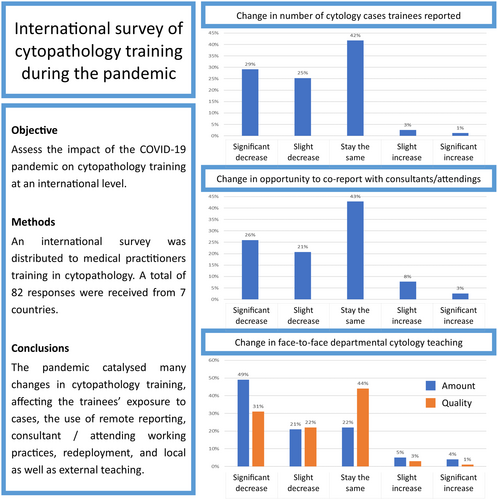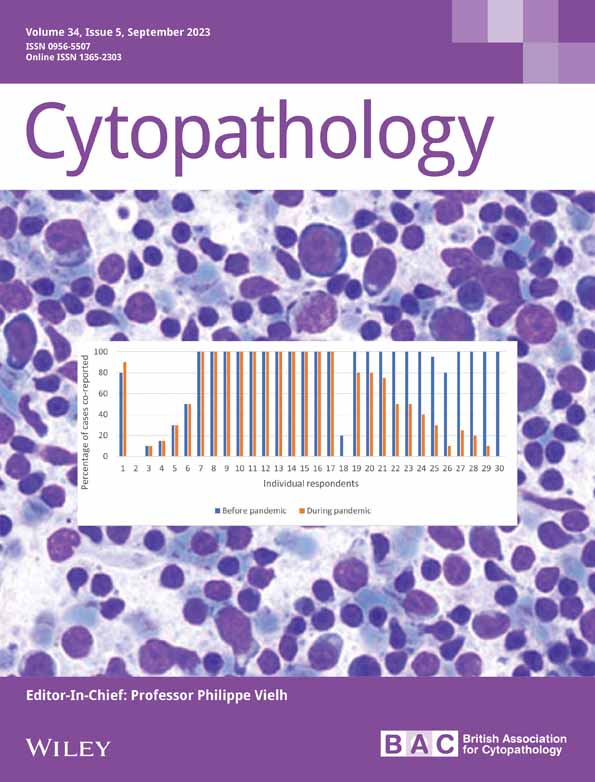International survey of cytopathology training during the pandemic: Water under the bridge?
Abstract
The purpose of this study was to assess the impact of the COVID-19 pandemic on cytopathology training at an international level. An anonymous online questionnaire was distributed by members of the international cytopathological community to medical practitioners in cytopathology. The survey explored perceived changes in cytology workload and workflow during the pandemic, and its effect on both non-cervical and cervical cytology reporting and teaching. A total of 82 responses were received from seven countries. Approximately half of the respondents reported a decrease in the number and range of cytology cases during the pandemic. Nearly half (47%) saw a reduction in the opportunity to co-report with consultants/attendings, and 72% of the respondents reported that their consultants/attendings were working remotely during the pandemic. Another 34% of the respondents were redeployed for 3 weeks to 1 year, with 96% stating that this period was only partially compensated for during their training, if at all. The pandemic negatively affected the opportunity to report cervical cytology, perform fine needle aspirations, and participate in multidisciplinary team meetings. Most respondents (69%) saw a decrease in the amount and quality (52%) of face-to-face departmental cytology teaching, whereas remote departmental teaching improved in amount (54%) and quality (49%). Almost half (49%) reported that cytology teaching in the regional, national, and international settings increased in both amount and quality. The pandemic catalysed many changes in cytopathology training, affecting the trainees' exposure to cases, the use of remote reporting, consultant/attending working practices, redeployment, and local as well as external teaching.
Graphical Abstract
Assessment of the impact of the COVID-19 pandemic on cytopathology training at an international level. An international survey was distributed to medical practitioners training in cytopathology. A total of 82 responses were received from seven countries. The pandemic catalysed many changes in cytopathology training, affecting the trainees’ exposure to cases, the use of remote reporting, consultant/attending working practices, redeployment, and local as well as external teaching.
Open Research
DATA AVAILABILITY STATEMENT
The data that support the findings of this study are available from the corresponding author upon reasonable request.





